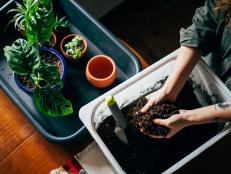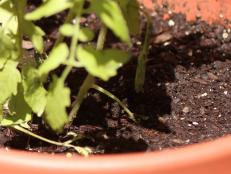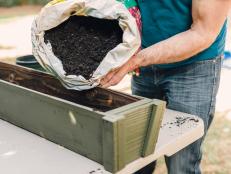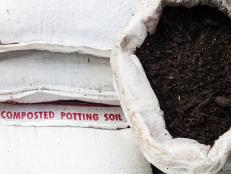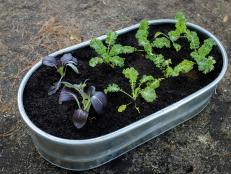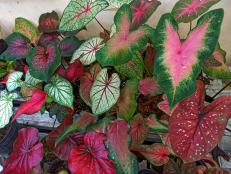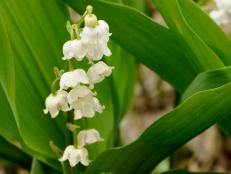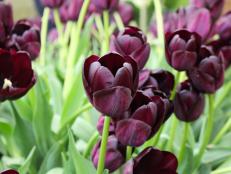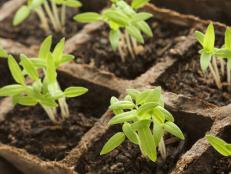Colorful Plants That Like Wet Soil
If you can't divert accumulating water, consider Plan B — install plants that don't mind getting wet feet from time to time.
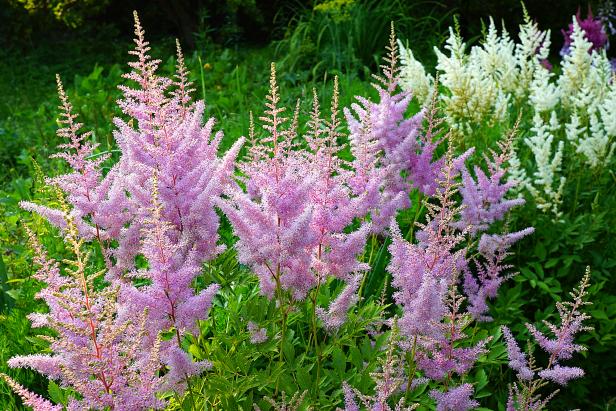
Shutterstock
Consider one of our favorite plants that like wet soil, such as astilbe, if you have a spot in your yard that doesn't drain well.

If you have a landscape that remains wet for a while after each rain — and there's nothing that you can do to alter the soggy conditions — then you need plants that don't mind the muck.
Wet soil can mean the death of many landscape plants due not only to excess water but also to lack of oxygen. Plants that can't tolerate such conditions usually die of suffocation.
Improving drainage in the area is always a plus; consider installing a French drain, a wet-weather bed or raised beds. If none of those are possibilities, choose plants that handle varying degrees of wetness.
Here are some of our favorite colorful plants for wet soil.
Tropicanna Canna
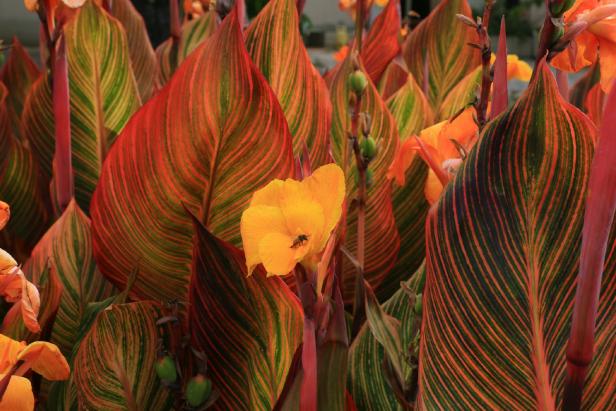
Anthony Tesselaar Plants at Tesselaar.com
Grow a touch of the tropics with Tropicanna canna. This south-of-the-border beauty unfurls leaves striped in shades of red, burgundy, pink, gold, yellow and green. Orange blooms complement the colorful leaves. Give canna a spot in full sun for best growth and to enjoy the beauty of leaves backlit by sun. Plants grow 4 to 6 feet tall. Hardy in Zones 7-11.
Blue Camassia
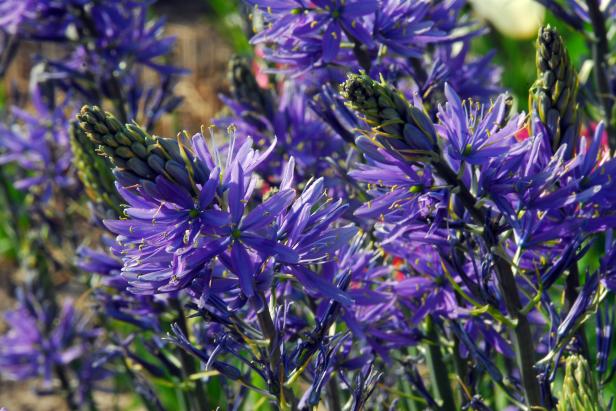
Wouter Koppen for iBulb.org
Most bulbs can't take moist soil, but camass lily (Camassia leichtlinii 'Caerulea') is an exception. This heirloom beauty dates to 1853 and goes by a host of names, including wild hyacinth, quamash and Leichtlin's camass. It's a must-have bulb for spring color because it brings strong blue tones to the garden during the time between spring daffodils and tulips. Flowers open in spikes surrounded by deer- and rabbit-resistant leaves. Plants naturalize readily to form drifts of color when conditions are right. This beauty grows 24 to 30 inches tall. Hardy in Zones 4-8.
Bee Balm
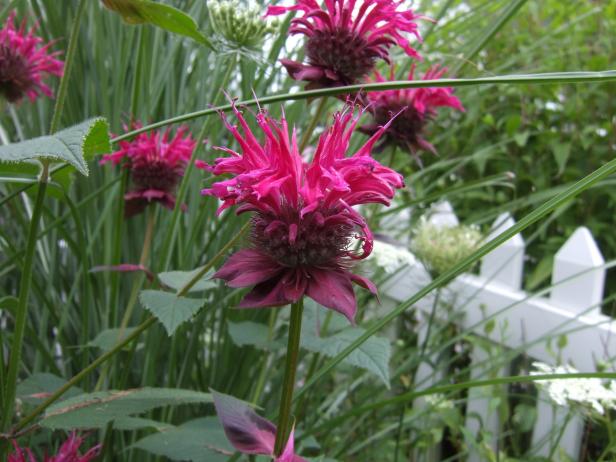
Julie Martens Forney
Bee balm, also known as Oswego tea, explodes with floral fireworks in summer. This variety is 'Raspberry Wine', beloved for its burgundy-tinted leaves that resist powdery mildew. Flowers attract bees, butterflies and hummingbirds. Bee balm (Monarda didyma) makes a terrific addition to a cutting garden. Place plants in full sun to part shade with consistently moist soil. Rabbit- and deer-resistant plants grow 30 to 36 inches tall and 14 to 18 inches wide. Hardy in Zones 4-9. Look for bee balm in a host of colors and plant sizes — there's one to fit any spot in your garden.
Amethyst Pearl Phlox
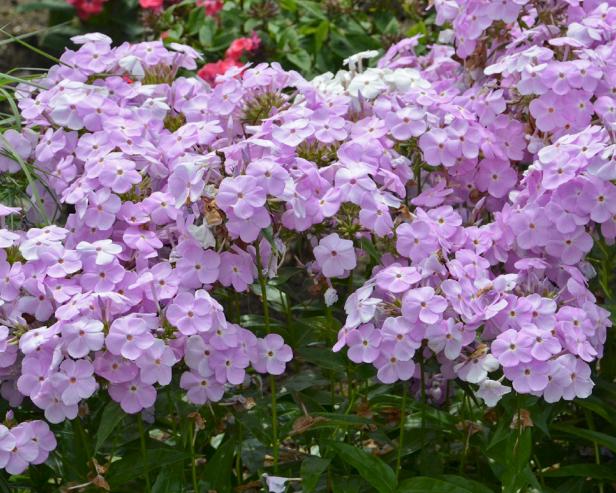
PerennialResource.com
Summer-long color is yours when you add 'Amethyst Pearl' phlox (Phlox carolina) to your garden. A butterfly favorite, 'Amethyst Pearl' opens pale lavender-pink blooms starting in early summer. The show continues until early fall, with blossoms beckoning butterflies, bees and other pollinator insects. If you like gathering garden bouquets, grow this phlox — its flowers look great in a vase. Note that while this beauty looks like old-fashioned garden phlox, it's actually a different species. Be sure to get Phlox carolina if you want a phlox for damp soil. Plants grow 18 inches tall and wide. Hardy in Zones 3-8.
Butterfly Weed

Julie Martens Forney
Roll out the welcome mat for butterflies with one of their favorite flowers: butterfly weed (Asclepias tuberosa). Nectar- and pollen-laden blossoms beckon other pollinators, too, including bees, hummingbirds and other insects. Orange flowers are standard, but you can find varieties with yellow blooms, such as 'Hello Yellow'. A native plant, butterfly weed offers summer-long blooms when you remove the first round of spent flowers. Plants are slow to wake up in spring. Consider marking the spot to avoid disturbing still-dormant plants with early spring gardening. Deer- and rabbit-resistant plants grow 24 inches tall and wide. Hardy in Zones 3-9.
'Over in Gloryland' Siberian Iris
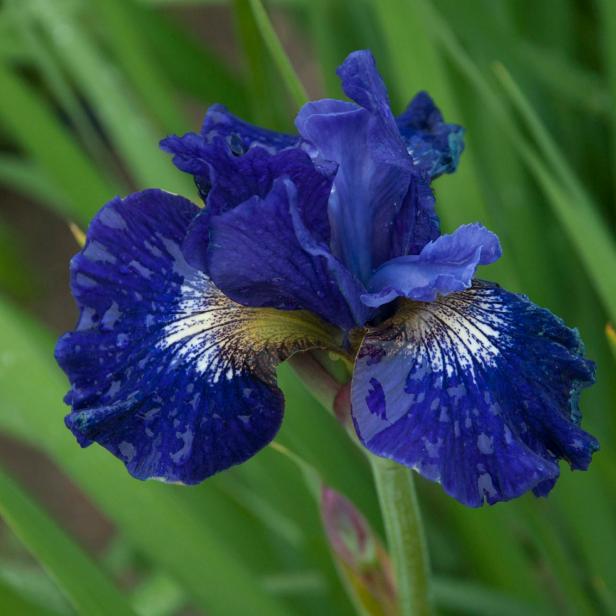
PerennialResource.com
Vibrant purple flowers 5 inches across open on Siberian iris (Iris sibirica) in early summer. Siberian iris is carefree, growing in full sun to part shade. Leaves add a medium texture to the garden and look good all through the growing season. Siberian iris opens flowers in many shades, including blue, purple, gold, burgundy, pink and white. This iris needs moist soil to thrive, especially when planted in full sun. It's known as the go-to iris for Southern gardens. Plants grow 34 inches tall by 18 to 24 inches wide. Hardy in Zones 3-9.
Summerific 'Perfect Storm' Hibiscus
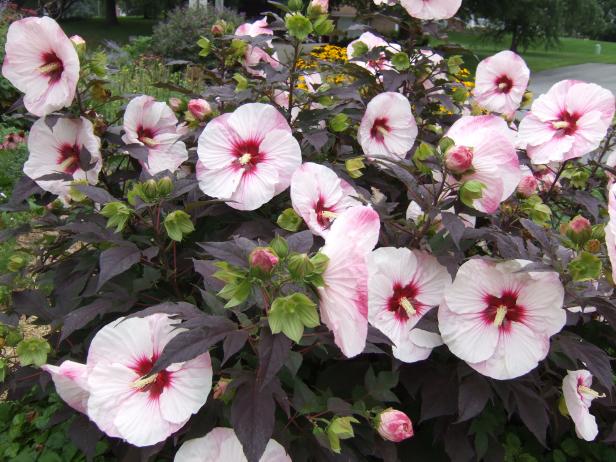
Julie Martens Forney
Large flowers open 7 to 8 inches across on Summerific 'Perfect Storm' hibiscus. This dwarf perennial hibiscus brings down the height of this perennial beauty to a tidy 3 feet, making it a perfect addition to a perennial or shrub border. Dark burgundy leaves complement the white flowers with a red eye, which appear from midsummer through early fall. Perennial hibiscus appreciates moist soil and is one of the last perennials to pop through soil in spring. Plants grow 30 to 36 inches tall and 54 to 60 inches wide. Hardy in Zones 4-9. You can also find taller perennial hibiscus that grow 5 feet or more.
'Black Stockings' Meadow Rue
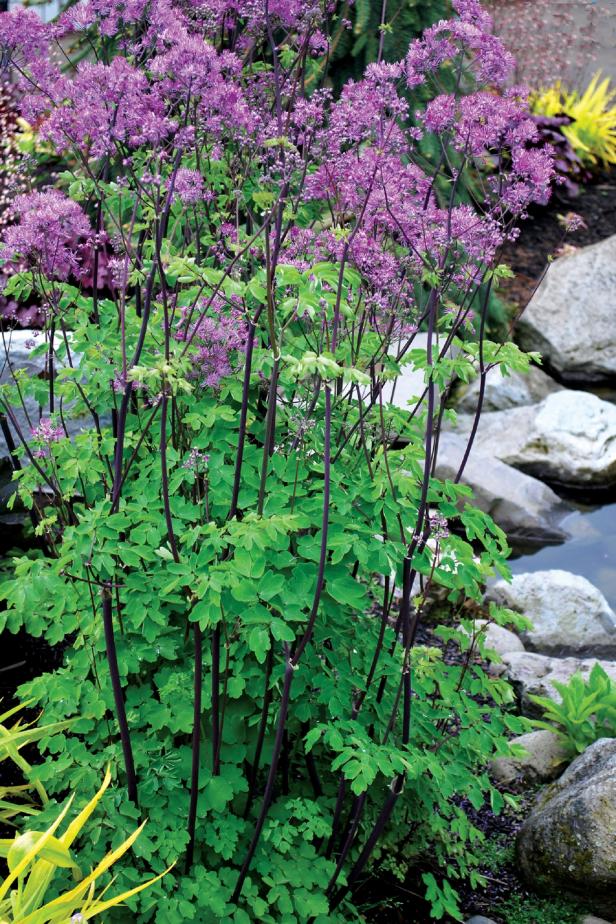
TerraNovaNurseries.com
A native plant, meadow rue (Thalictrum aquilegiifolium) adds height and fine textured beauty to plantings. 'Black Stockings' sweetens any scene with black stems that contrast prettily with blue-green leaves and lavender blooms. Meadow rue flowers in mid- to late summer and makes a good streamside or back-of-the-border plant. Blossoms beckon hummingbirds and butterflies. Plants grow 48 inches tall by 24 inches wide. Hardy in Zones 5-9.
Ostrich Fern
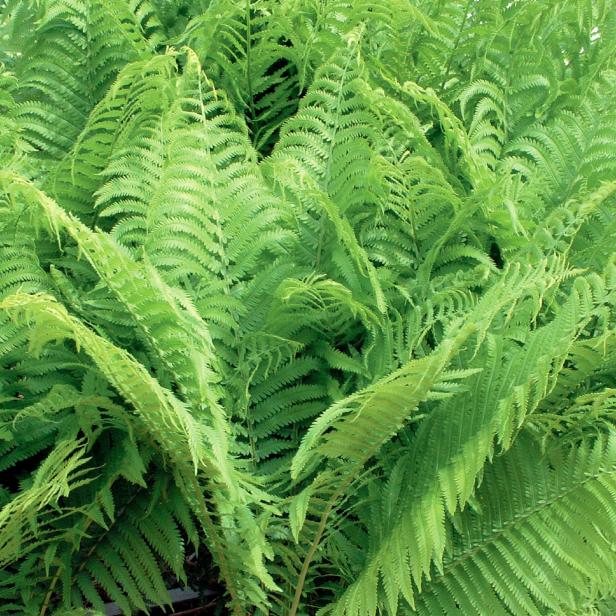
PerennialResource.com
Feathery leaves earn Ostrich fern (Matteuccia struthiopteris) its common name. The bright green leaves unfurl to a regal size of 3 to 6 feet tall. This native fern spreads quickly to colonize an area, making an eye-catching groundcover. It grows best in shade to part shade, but in consistently moist soil. It thrives in full sun, too. Deer- and rabbit-resistant, plants grow 3 to 6 feet tall by 3 to 4 feet wide. Hardy in Zones 3-9.
Cardinal Flower
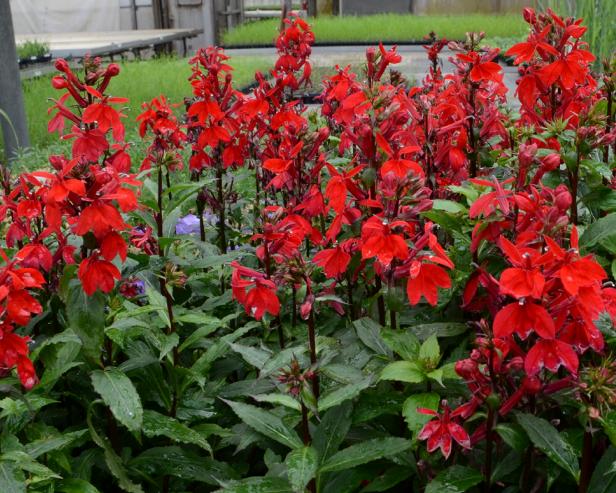
PerennialResource.com
If you love hummingbirds, include cardinal flower (Lobelia speciosa) in your yard. The brilliant red blossoms on this perennial are a magnet for hummers. Plants branch well and produce flowers on strong upright spikes from mid-summer into early fall. Site this native in full sun to part shade. The deer- and rabbit-resistant plants grow 20 to 24 inches tall by 12 to 14 inches wide. Hardy in Zones 6-10. If you prefer pink flowers, look for 'Starship Rose' cardinal flower.
'Bottle Rocket' Ligularia
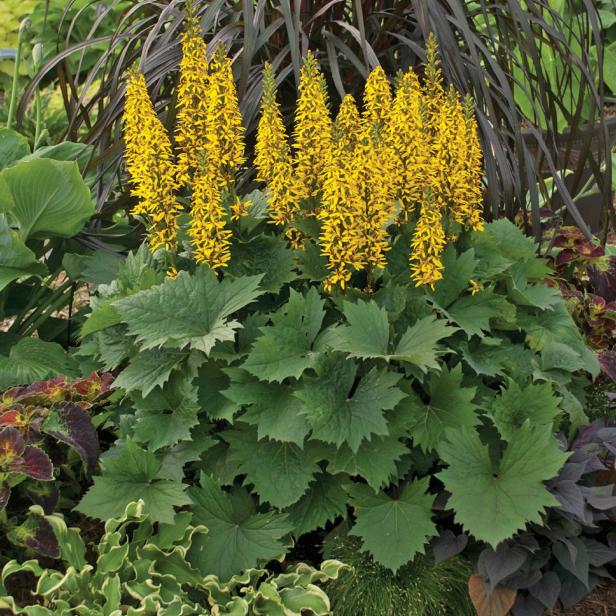
PerennialResource.com
Part shade and moist soil provide perfect conditions for ligularia. Historically, ligularia was a go-to perennial for moist shade, but flower spikes often towered far above leaves, creating a plant that looked out of proportion. 'Bottle Rocket' improves on that condition, unfurling bright yellow flowers that stand just above leaves. When the plant blooms, it appears to be hoisting a sunny bouquet. The deer-resistant plants grow 28 to 34 inches tall by 24 to 28 inches wide. Hardy in Zones 4-9.
Toffee Twist Carex
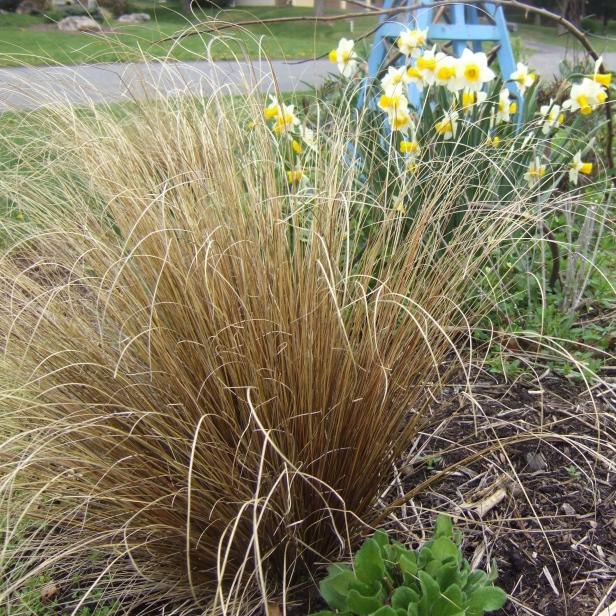
Julie Martens Forney
Carex is famous for its love of moist soil, and Toffee Twist is no exception. Coppery leaves give this perennial a striking look that improves any planting — in pots or beds. Toffee Twist carex resembles an ornamental grass and grows best in full to part sun. One important distinction with carex is that it behaves like a cool-season grass, growing actively in the cool seasons — spring and fall. These are the best times of year to divide or transplant this bronze beauty. Plants grow 18 to 24 inches tall and wide. Hardy in Zones 7-10.
Here are more of our favorite perennials, shrubs and trees for areas that are occasionally wet but dry reasonably well in a few days:
- astilbe
- sedge
- rose mallow
- summersweet
- European cranberrybush viburnum
- leucothoe
- fothergilla
- inkberry
- sweetspire
- sweet and swamp azaleas
- white spruce
- black gum
For more serious water issues, these plants that can handle longer submersion.
Perennials That Can Handle Prolonged Submersion
- blue flag (Iris vericolor)
- bog arum(Calla palustris)
- cattail (Typha spp.)
- cordgrass (Spartina alterniflora)
- flowering rush (Butomus umbellatus)
- golden club (Orontium aquaticum)
- hardy arum (Peltandra virginica)
- horsetail (Equisetum hyemale)
- Japanese water iris (Iris ensata)
- marsh marigold (Caltha palustris)
- rush (Juncus spp.)
- southern blue flag (Iris virginica)
- spike rush (Eleocharis acicularis)
- sweet flag (Acorus calamus)
- water canna (Canna x generalis)
- water iris (Iris laevigata)
- yellow flag (Iris pseudacorus)
Shrubs That Can Handle Prolonged Submersion
- button bush (Cephalanthus occidentalis )
- red osier dogwood (Cornus sericea )
- tartarian dogwood ( Cornus alba)
- winterberry (Ilex verticillata)
- yaupon holly (Ilex vomitoria)
Trees That Can Handle Prolonged Submersion
- Atlantic white cedar (Chamaecyparis thyoides)
- baldcypress (Taxodium sp.)
- black ash (Fraxinus nigra)
- green ash (Fraxinus pennsylvanica)
- pear (Pyrus spp.)
- pin oak (Quercus palustris)
- river birch (Betula nigra)
- red maple (Acer rubrum)
- swamp tupelo (Nyssa sylvatica var. biflora)
- sweetbay magnolia (Magnolia virginiana)
- water tupelo (Nyssa aquatica)






